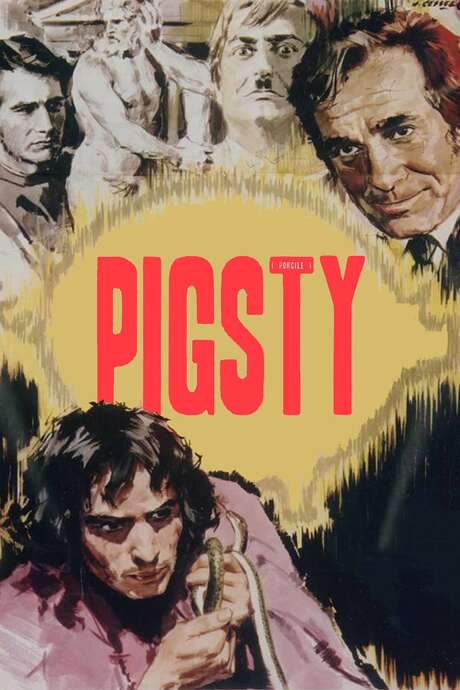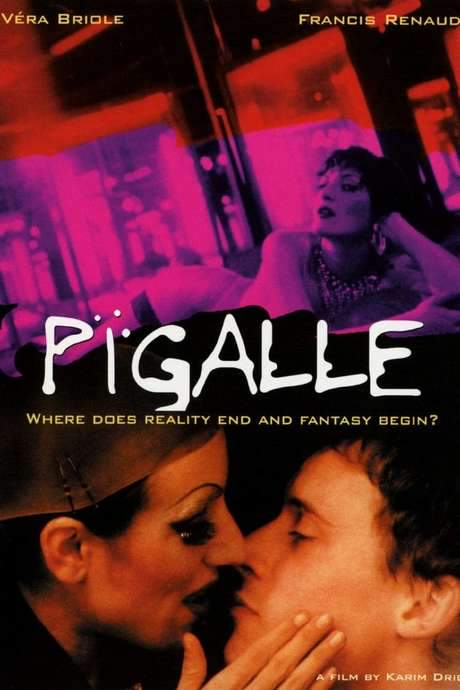
The Hour of the Pig
Year: 1993
Runtime: 112 mins
Language: English
Director: Leslie Megahey
In medieval France, idealistic lawyer Richard Courtois abandons Paris for a quieter life in the countryside, only to become entangled in romantic and political schemings. He is reluctantly assigned to defend a pig, owned by the enigmatic gypsy Samira, accused of murdering a young boy, while the justice system proves as absurd as the case itself.
Warning: spoilers below!
Haven’t seen The Hour of the Pig yet? This summary contains major spoilers. Bookmark the page, watch the movie, and come back for the full breakdown. If you're ready, scroll on and relive the story!
The Hour of the Pig (1993) – Full Plot Summary & Ending Explained
Read the complete plot breakdown of The Hour of the Pig (1993), including all key story events, major twists, and the ending explained in detail. Discover what really happened—and what it all means.
Set in 15th-century France, The Hour of the Pig follows the career and case files of Bartholomew Chassenee, a real lawyer who defended animals accused of crimes. In this world where animal trials mirror civil law, creatures were judged by the same standards as people, and the fate of beasts hung on the outcomes of long, tangled proceedings. Richard Courtois, [Colin Firth], and his clerk Mathieu, [Jim Carter], leave the bustle of Paris to practice law in a quiet rural village, Abbeville, in the province of Ponthieu, then part of Burgundy. Abbeville is a place where old rules and hidden agendas collide, and Courtois quickly finds himself drawn into a backlog of cases that test his ideals and his nerves.
In his first case, a farmer stands accused of killing his wife’s lover, and Courtois argues for acquittal. The farmer mouths a rueful confession afterward, muttering, “I should have done him years ago,” and offers his services to Courtois as thanks. The courtroom atmosphere is tense, but Courtois manages to win the man’s freedom, revealing the fragile maneuvering of justice in a world where passion and prejudice often overshadow evidence. This initial victory foreshadows the more perilous challenges to come.
Next, Courtois takes on a case of witchcraft against Jeannine Martin, [Harriet Walter]. He requests rats to testify that she did not bribe them to poison a neighbor, but when the rats fail to appear, the charge is dismissed—yet Jeannine is nonetheless condemned under the local customs rather than Roman law. As she is led away, she delivers a cryptic warning to Courtois: “There is darkness all about you, you can bring the light. Look to the boy, maître. Look to the boy.” The moment marks a turning point, showing how superstition and ritual can override reason even when the evidence seems thin.
A more unusual and morally complex case follows: a pig is accused of killing a young Jewish boy. The animal is owned by a group of Moors who are traveling through town. Mahmoud, [Sami Bouajila], and his sister Samira, [Amina Annabi], plead with Courtois to defend the pig, arguing that it is their primary food source as winter approaches. Courtois declines initially, but the case pulls him into a web of loyalty, hunger, and prejudice that extends beyond one animal and one crime. Samira’s later nocturnal visit to Courtois—where she quietly offers herself in exchange for help—complicates his judgment and tests his resolve, highlighting the human desires that simmer beneath legal obligations.
As Courtois delves deeper, he uncovers a far more intricate scheme involving the Seigneur Jehan d’Auferre, [Nicol Williamson], who wields power with subtle bribes and veiled threats. Filette d’Auferre, [Lysette Anthony], and Lady Catherine d’Auferre, [Joanna Dunham], move in the Seigneur’s orbit, their eccentricities and ambitions shaping the fate of those who appear before the court. The Seigneur’s manipulations suggest that the pig case is only a piece of a larger political game, rooted in racism, corruption, and the fragile lines between justice and vengeance. The Seigneur even hints at marriages as bargaining chips, further complicating Courtois’s position.
The Advent festival arrives and the case is adjourned, but the tension does not fade. The prosecutor Pincheon, [Donald Pleasence], reveals that he left Paris for Ponthieu to shine in a village life he could not achieve there, and he urges Courtois to abandon the peasants’ world for the brighter glare of the city. Meanwhile, a darker development unfolds: the skeleton of another missing Jewish boy is found in the midst of Courtois’s building project, leading him to suspect a human serial killer is at work and that the pig may have been framed.
During the Festival of The Advent, Samira performs for a gathering of notables at the Seigneur’s château, and a tense near-confrontation arises when the Seigneur’s son abuses his power. Courtois steps in to protect Samira, drawing attention to the danger the case represents beyond the courtroom. That night, Courtois also rescues a boy from a masked horseman bearing an axe, a vivid reminder that violence and danger lurk just beneath the surface of this seemingly quiet land.
In a confrontational climax, Courtois accuses the Seigneur, charging that his own son is the killer. Rather than deny the accusation, the Seigneur reveals that his son has gone to England for treatment, complicating the moral calculus of justice. The pig is ultimately acquitted when Valliere, the farmer Courtois saved in his first case, returns with a replica pig to demonstrate that the animal could not have committed the original crime. The courtroom breathes a sigh of relief, yet the ending reveals that the danger may be far from over.
As Courtois departs, a knight appears just as Jeannine had foretold. The armor comes off to reveal the buboes of the Black Death, an ominous omen that the real threat haunting this land is not superstition or a single crime, but a looming plague that could reshape everyone’s fate. The Hour of the Pig is a pursuit of truth in a world where law, fear, and power collide, exposing how fragile justice can be when it is tested by politics, passion, and the darkest corners of human nature.
Last Updated: October 09, 2025 at 10:43
Unlock the Full Story of The Hour of the Pig
Don't stop at just watching — explore The Hour of the Pig in full detail. From the complete plot summary and scene-by-scene timeline to character breakdowns, thematic analysis, and a deep dive into the ending — every page helps you truly understand what The Hour of the Pig is all about. Plus, discover what's next after the movie.
The Hour of the Pig Timeline
Track the full timeline of The Hour of the Pig with every major event arranged chronologically. Perfect for decoding non-linear storytelling, flashbacks, or parallel narratives with a clear scene-by-scene breakdown.

Similar Movies to The Hour of the Pig
Discover movies like The Hour of the Pig that share similar genres, themes, and storytelling elements. Whether you’re drawn to the atmosphere, character arcs, or plot structure, these curated recommendations will help you explore more films you’ll love.
Explore More About Movie The Hour of the Pig
The Hour of the Pig (1993) Scene-by-Scene Movie Timeline
The Hour of the Pig (1993) Movie Characters, Themes & Settings
The Hour of the Pig (1993) Spoiler-Free Summary & Key Flow
Movies Like The Hour of the Pig – Similar Titles You’ll Enjoy
Paris Pigalle (2018) Full Summary & Key Details
Under Suspicion (1991) Full Summary & Key Details
Police (1985) Film Overview & Timeline
The Hour of 13 (1952) Spoiler-Packed Plot Recap
Wedding Trough (1974) Movie Recap & Themes
The French Sex Murders (1972) Spoiler-Packed Plot Recap
The Truth (1960) Complete Plot Breakdown
The French Detective (1975) Film Overview & Timeline
Gribouille (1937) Movie Recap & Themes
The Dark Hour (1936) Complete Plot Breakdown
The Rat (1925) Plot Summary & Ending Explained
The Unguarded Hour (1936) Movie Recap & Themes
Pigsty (1969) Full Movie Breakdown
Pigalle (1994) Complete Plot Breakdown
The Double Hour (2009) Full Summary & Key Details

















